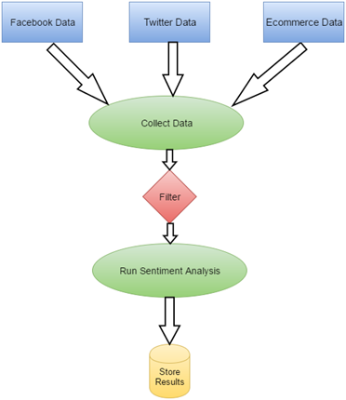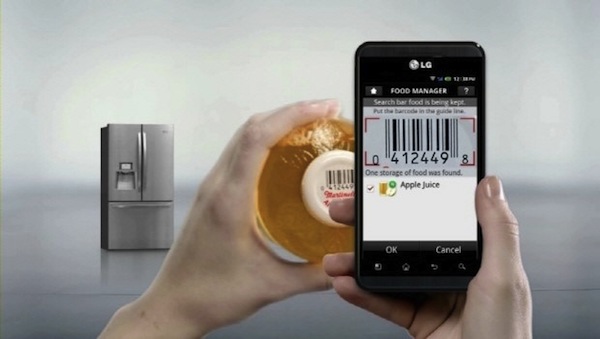Retailers are always fighting for better predictions of what their customers want. From setting price points to predicting next season's trends, retail has been working to move faster and be more efficient since its inception.
“Retailers are always fighting for better predictions of what their customers want.”
Tweet This
That's why every retail company has some form of retail analytics in place. Retail analytics is data in and around the creation, distribution, and purchase of products. Keeping track of what percentage of your inventory is still in stock would fall under retail analytics, but so would data about the efficacy of your new marketing campaign.
As consumers have adopted device after device and service after service, eCommerce worked hard to create robust methods of tracking and analyzing a flood of new retail data. Retail analytics today is more powerful and more flexible than ever before. For marketers, salespeople, and product people, it is the way forward for eCommerce.
Here's everything you need to know to keep up with retail analytics for today and tomorrow.
What can you expect from retail analytics?
When something encompasses production through sales, its possibilities seem almost endless. Right now, though, the big uses for retail analytics center on optimizing procurement, optimizing merchandising, and optimizing marketing.
Optimizing procurement
One of the key places that retail analytics helps businesses is optimizing procurement. By better predicting sales numbers, procurement and stocking gets more efficient. Retailers can also better see the cost balance for a given materials vendor, with more visibility into how the different purchases from a single vendor add up.
Optimizing Merchandising
When it comes to merchandising, product appeal has always been a huge consideration for retailers. With digital marketing and eCommerce, it's only gotten more important. The color of landing pages, the music in product videos, the packaging that an item comes in when someone receives it in the mail — these things are all important factors that replicate the “in-store experience” for digital consumers. And they're things that marketers are testing to optimize for the most appeal to online shoppers, who have their attention going in 700 different directions.
"The best packaging [...creates] memorable marketing," writes Simon Preece for Forbes.
Another big place that companies are constantly tweaking with the help of retail analytics is pricing. Companies like Price Intelligently have made whole businesses off of analyzing how to optimize pricing by digging into data about customers, price points, and pricing strategies. Even companies that aren't outsourcing their pricing strategy are still paying close attention to what their consumer data tells them about how much a customer is willing to pay for their product.
Optimizing Marketing
The digital age birthed more sales channels than ever before, and now it's rushing to catch up to them. Consumers find their way to products across social media, shopping websites, word of mouth, meatspace ad campaigns, emails, and magazines. To track all of these channels is difficult, but retail analytics is getting better at tracking across devices and digital channels to give a better idea of which ads are working online.
“The digital age birthed more sales channels than ever before, and now it's rushing to catch up to them.”
Tweet This
Ad targeting is another area that can be positively influenced by retail analytics. As users login with their social accounts for eCommerce sites, see targeted ads on social media, and are retargeted after purchase, more information about their demographics, habits, likes, and dislikes are gathered. This means that retail analytics can streamline ad targeting for happier customers and happier marketers.
Digitalmarketer's literal ad target shows one way to determine ad interest and reach by using the “but no one else would” trick.
Trends in retail analytics
Digital retailing has both given a boost to traditional retail analytics and allowed companies to create new ways to follow their digital commerce. While companies are going to continue to refine retail analytics, the retail analytics trends of today are strongly tied to our ideas about multichannel commerce and will likely continue in this vein.
Oldies but goodies
Let's start out with some of the “traditional” retail analytics that have stood the test of time. These are some baseline heavy-hitters. Where before, people might have tracked these manually, they have now been supercharged by contemporary analytics platforms.
POS analytics. Point of Sale analytics, or POS analytics, is a broad field that uses the information that relates to the final sale of an item. This started as simply a log of payments and has progressed as sales technology picked up, gaining steam from the mid-1980s onward. Now, POS analytics will cover not just what was purchased and by whom, but also where that item was stored or shipped from, and information about the customer (rewards points, address, email, etc.). Almost every eCommerce system comes equipped with basic POS analytics — Shopify is a great example.
“Traditional” marketing analytics. Marketing has been around forever, and old-school analytics have made their way over to digital. Tracking the basics of marketing campaigns is easier with marketing tools, and many of them put bells and whistles on basic marketing stats, like ROI on mailing campaigns. Google Analytics or built-in analytics on platforms like Facebook Business often serve as an easy way into this type of data.
New kids on the block
What's happening in retail analytics today isn't just refreshed POS analytics. More data is being collected, which means there's more to dive into. The retail analytics trends of today are focused on looking at more micro-level actions or strings of actions that are predictive, rather than simply using analytics to form assessments of marketing schemes or to find macro trends.
Micro marketing analytics. Digital analytics platforms have allowed businesses a greater window of insight into their marketing analytics. Now, it's easier than ever to look at more micro-level marketing data (like how many impressions a customer needs before they purchase), what items are likely to be purchased together or in subsequent orders, and live updates of A/B testing on campaigns.
Sentiment analysis. Sentiment analysis is a new way of determining how customers and potential buyers feel about your product. It uses text analysis to determine how your customers are talking about your products on channels from on-site product reviews to comments on your social pages. Sentiment analysis helps predict trends, gauge customer reactions to products and marketing materials, and can be the missing link that explains sales fluctuations.
- Omnichannel analytics. With all of the different platforms available to customers, and all of the paths customers take to purchase, getting a robust view of how your customers are purchasing across platforms and devices is crucial. While some software, like Sellbrite, include multi-channel eCommerce reporting, companies also turn to their IAM to help them stitch together customer identities across channels. This can help eCommerce companies build and track brand experiences.
The future
Moving commerce online was the first in a series of chain reactions that have opened an entirely new world for retail and marketing. Even though technology and techniques seem to move at lightening speed, the truth is that eCommerce, shopping and marketing analysis, and behavioral analysis of customers has been slow to perfect. While getting targeting capabilities, cart abandonment numbers, and CTR stats has been quick, true customization for retailers, shoppers, and marketers is just beginning.
Better predictions and forecasting. While companies like SAS are investing a lot of energy into building forecasting capabilities, predictive analytics for retail will get better as more customer data is collected and software is better able to track and integrate that data across channels. Because predictions and forecasting are holistic efforts, as each part of data-rich eCommerce improves, so will these capabilities.
More IoT data. It's no secret that the IoT has more and more use cases as each year passes. More connected devices will mean a better picture of your eCommerce customer and their behaviors. eCommerce is also likely to build its own integrations with IoT devices — think Farmstead integrated with your smart fridge — and this will bring a whole new set of data to process.
Getting your data together
The more that eCommerce progresses, the better retail analytics is going to get. Right now, companies and platforms have the capability to collect a huge amount of data, but we're still in the process of refining how to use it. Marketing is getting smarter and optimizations are being made all the time. From startups to the enterprise, eCommerce software is trying hard to figure out the best ways to help companies use customer data.
“The more that eCommerce progresses, the better retail analytics is going to get.”
Tweet This
For now, you should be looking at a combination of tried-and-tested retail analytics and newer approaches to retail data, like putting together cross-channel analytics and predictive metrics. The good news is that things aren't changing quite as fast as we think they are, and there's plenty of time to ramp up your analytics to get ready for the next step in eCommerce business.
Aside: Securing Applications with Auth0
Are you building a B2C, B2B, or B2E tool? Auth0, can help you focus on what matters the most to you, the special features of your product. Auth0 can improve your product's security with state-of-the-art features like passwordless, breached password surveillance, and multifactor authentication.
We offer a generous free tier so you can get started with modern authentication.
About the author

Martin Gontovnikas
Former SVP of Marketing and Growth at Auth0 (Auth0 Alumni)
Gonto’s analytical thinking is a huge driver of his data-driven approach to marketing strategy and experimental design. He is based in the Bay area, and in his spare time, can be found eating gourmet food at the best new restaurants, visiting every local brewery he can find, or traveling the globe in search of new experiences.View profile




